Brochure
MARGAM
Pushpanjali
Ragam: Sriranjani
Talam: Adi
Pushpanjali is the most common invocatory piece in a margam, in which the dancer offers flowers and seeks the blessings of the Gods, and pays respects to the Guru, the musicians, the Mother Earth and the audience. Pushpanjali is derived from Pushpam – flower and Anjali – an offering, by folded hands to show respect.
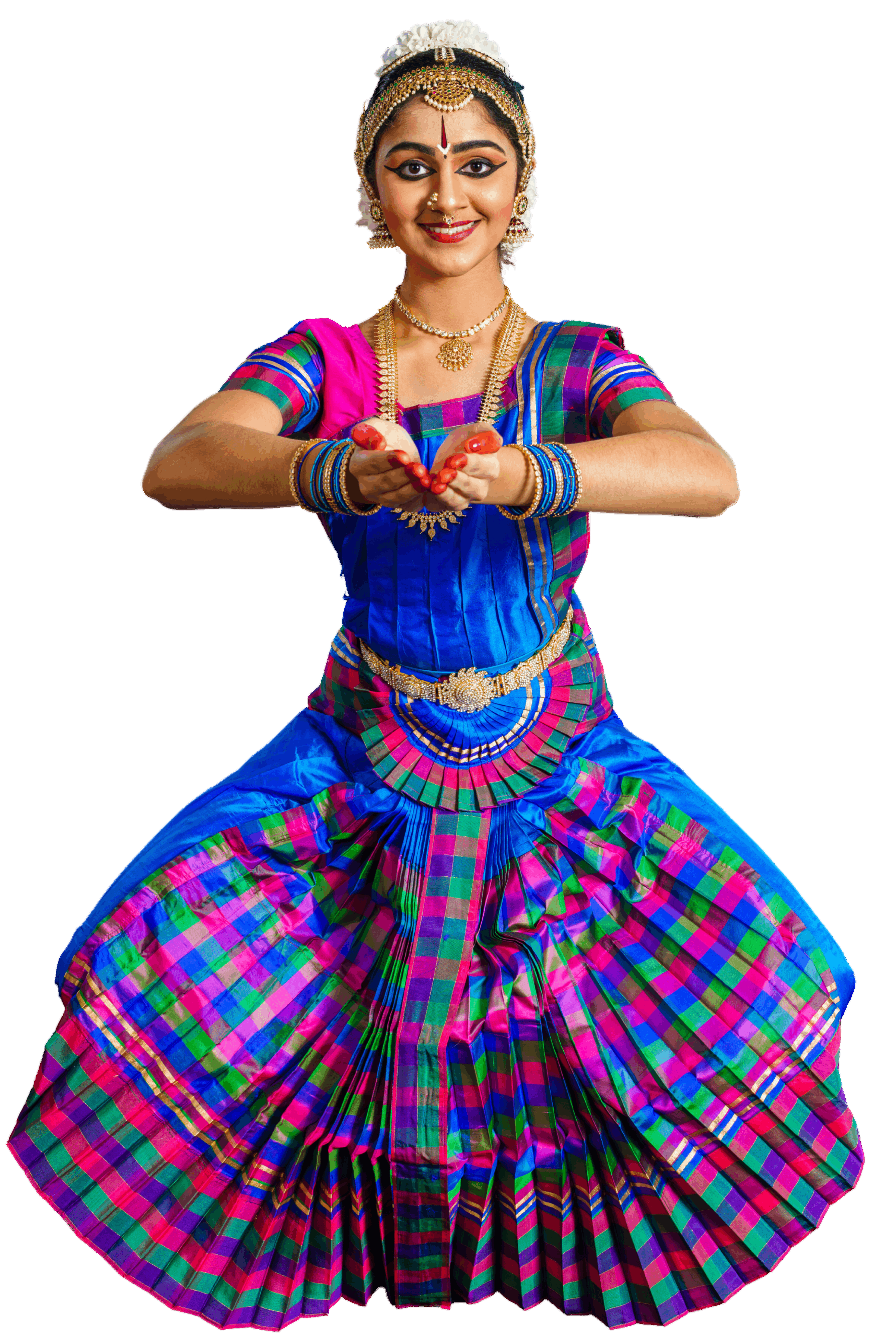
Pushpanjali
Ragam: Sriranjani
Talam: Adi

Pushpanjali is the most common invocatory piece in a margam, in which the dancer offers flowers and seeks the blessings of the Gods, and pays respects to the Guru, the musicians, the Mother Earth and the audience. Pushpanjali is derived from Pushpam – flower and Anjali – an offering, by folded hands to show respect.
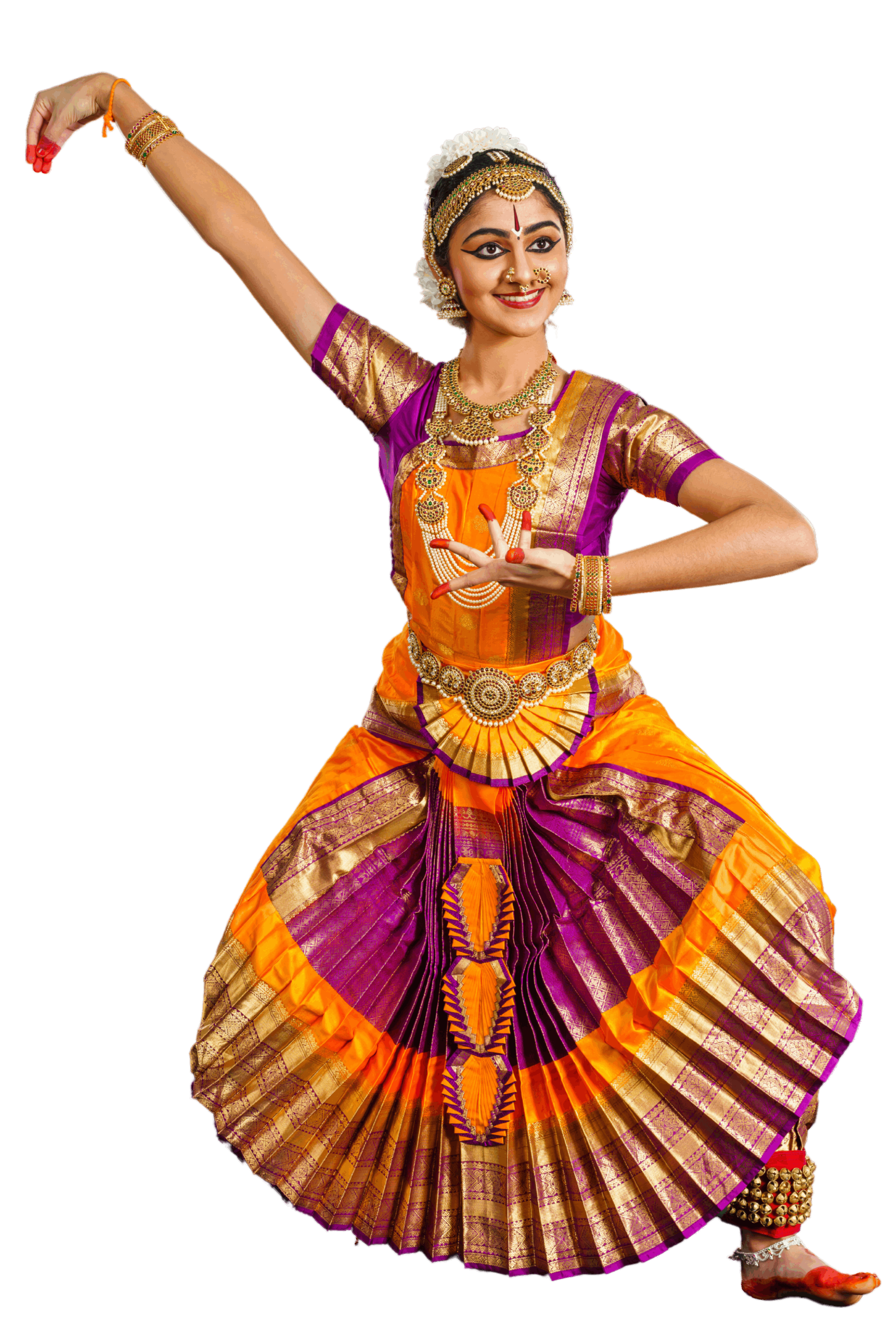
Gaja Vadhana Karuna
Ragam: Sriranjani
Talam: Adi
Composer: Papanasam Sivan
Language: Tamizh
Gajavadana Karuna Sadhana, is a poem written in praise of Lord Ganesha. This krithi seeks “arul” or boon from Lord Ganesha, the remover of all obstacles, fear and sorrow. Ganesha is the embodiment of ultimate truth and the bestower of salvation(moksha).
Gaja Vadhana Karuna

Ragam: Sriranjani
Talam: Adi
Composer: Papanasam Sivan
Language: Tamizh
Gajavadana Karuna Sadhana, is a poem written in praise of Lord Ganesha. This krithi seeks “arul” or boon from Lord Ganesha, the remover of all obstacles, fear and sorrow. Ganesha is the embodiment of ultimate truth and the bestower of salvation(moksha).
Thodayamangalam
Talam: Talamalika
Composer: Sri Bhadradri Ramadas, Sri Annamacharya and Sri Vijaya Gopala Swamigal
Language: Sanskrit
Thodayamangalam, literally meaning “auspicious beginning,” is a set of five krithis, or songs, to welcome Lord Rama, Lord Krishna, and Lord Srinivasa. Sampradaya/Paddathi Bhajans and Namasankeerthanams begin with Thodayamangalam.
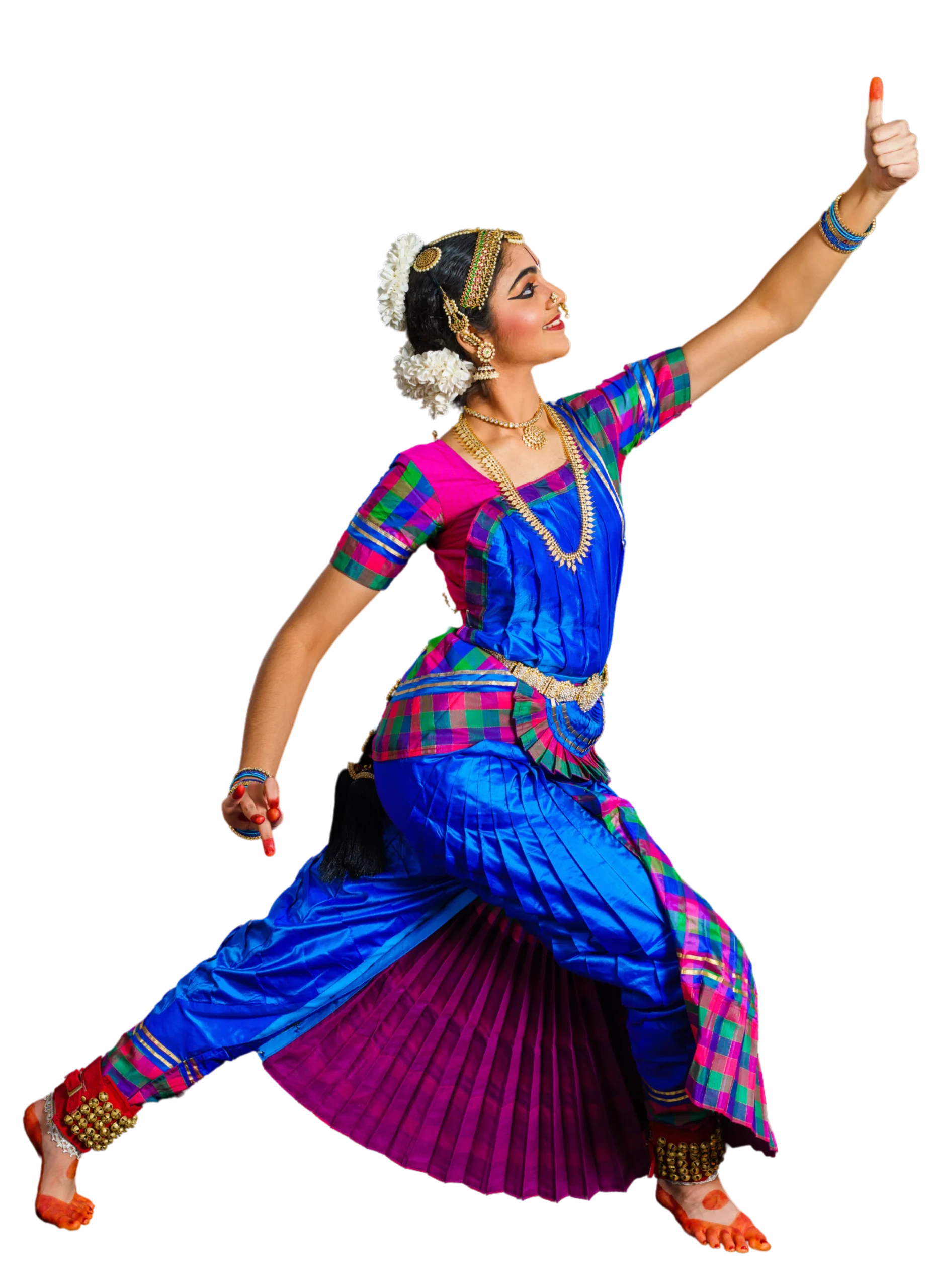
Thodayamangalam

Talam: Talamalika
Composer: Sri Bhadradri Ramadas, Sri Annamacharya and Sri Vijaya Gopala Swamigal
Language: Sanskrit
Thodayamangalam, literally meaning “auspicious beginning,” is a set of five krithis, or songs, to welcome Lord Rama, Lord Krishna, and Lord Srinivasa. Sampradaya/Paddathi Bhajans and Namasankeerthanams begin with Thodayamangalam.
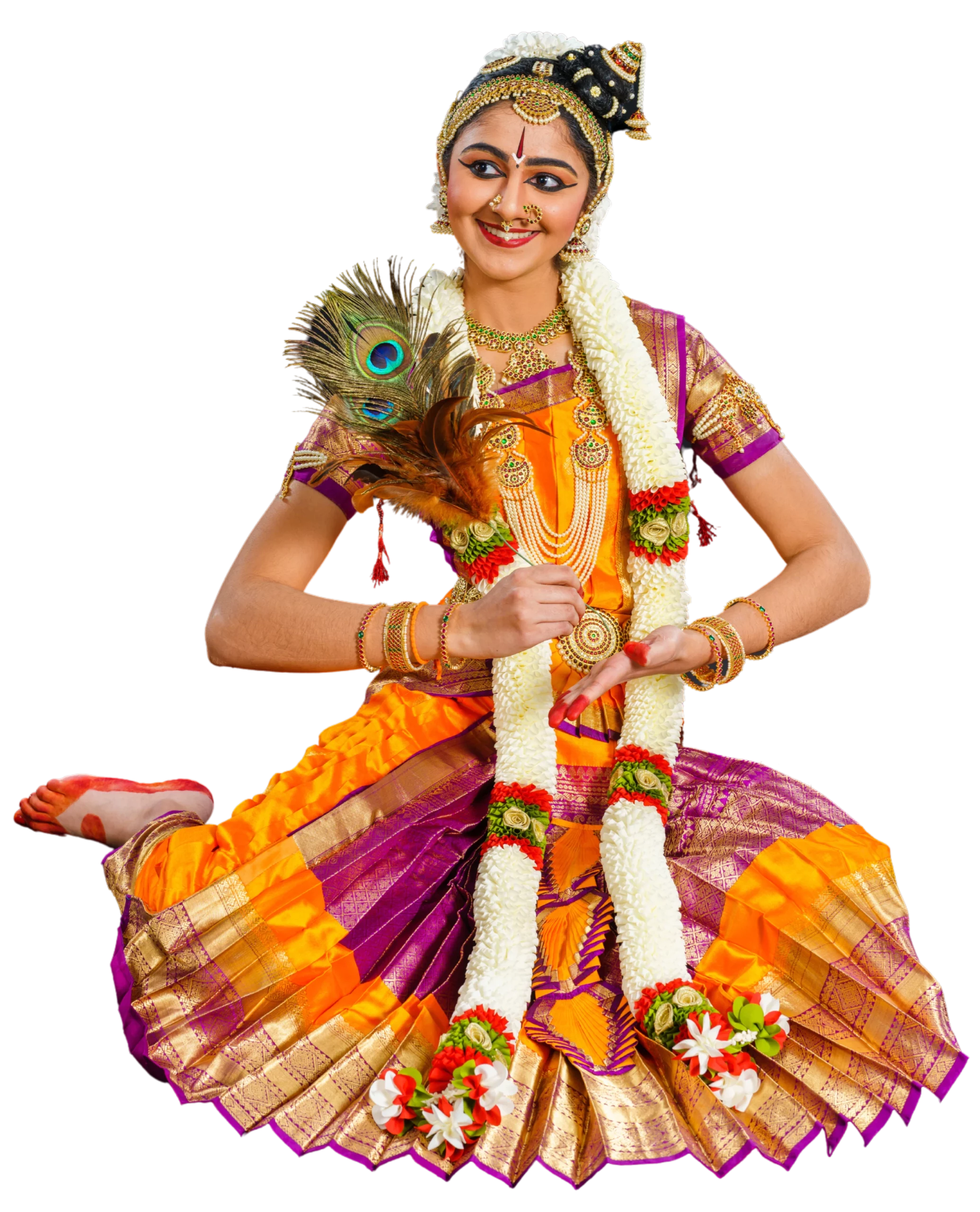
Srivilliputhur Andal Kauthuvam
Ragam: Gowlai
Talam: Adi
Language: Tamizh
Kauthuvam has a combination of syllables, pertaining to footwork(sollukattu), that pertains to the deeds of Gods and thus presents pictures of various types and ends with the rhythmic syllable, ‘kitta’. This Kauthuvam describes Andal’s birth, and how she dedicated her life for her love and devotion toward Lord Vishnu. Andal, also known as Godha Devi, Bhu Devi, one of the 12 Alwars(Hindu poet saints) who composed hymns on Lord Vishnu in Tamil, a popular compilation called Naalaayira Dhivya Prabhandham(4000 poems), is equivalent to the vedas, and chanted in temples. Andal’s compositions include Thiruppavai and Nachiyar Thirumozhi.
The word Andal in Tamil means ‘the woman who rules over the lord’. Andal is remembered for her pure love and devotion towards the lord.
Here is a vocal rendition of 2nd Pasuram and 19th Pasuram of Thiruppavai to experience the finest poet’s beautiful Tamizh.
Pasuram 2 Vaiyathu Vaazhveergaal
Pasuram 19 Etrakalangal
This piece is very special to Shrujana and her family because Shrujana’s maternal family hails from the great village of Srivilliputhur, the birthplace of Andal.
Srivilliputhur Andal Kauthuvam

Ragam: Gowlai
Talam: Adi
Language: Tamizh
The word Andal in Tamil means ‘the woman who rules over the lord’. Andal is remembered for her pure love and devotion towards the lord. Andal is remembered for her poetry, in which she often strikes autobiographical notes about her love for her Lord. She describes her good fortune of being the daughter of Vishnucitta, the best of the devout, who lives in Srivilliputhur and adores the Lord. Today, the tulasi garden in which she was found is preserved in Srivilliputhur. Vishnucitta’s house, adjacent to Lord Vishnu’s temple, has been converted into a temple in honor of Andal and contains the well in which she admired her reflection while wearing the Lord’s garlands as ‘Choodikodutha Chudarkodi’.
Here is a vocal rendition of 2nd Pasuram and 19th Pasuram of Thiruppavai to experience the finest poet’s beautiful Tamizh.
Pasuram 2 Vaiyathu Vaazhveergaal
Pasuram 19 Etrakalangal
This piece is very special to Shrujana and her family because Shrujana’s maternal family hails from the great village of Srivilliputhur, the birthplace of Andal.
Devar Munivar Varnam
Ragam: Shanmukhapriya
Talam: Adi
Composer: Sri Lalgudi G. Jayaraman
Language: Tamizh
Varnam is the central and most elaborate item in a Bharatanatyam repertoire. It is the longest, most intricate and demanding piece, and it alternates between nritta(pure dance) and abhinaya (expressions). There is a perfect synchronization of various elements of dance, this giving the dancer abundant scope for displaying her rhythmic talents along with rich and variegated abhinaya. Devar Munivar Varnam in praise of Vishnu. As Lord of the world, He is revered by Gods (Devar) and sages (Munivar) alike. His ten forms or Avatars, called Dasavatharam include Matsya, Kurma, Varaha, Narasimha, Vamana, Parasurama, Rama, Krishna, Kalki.
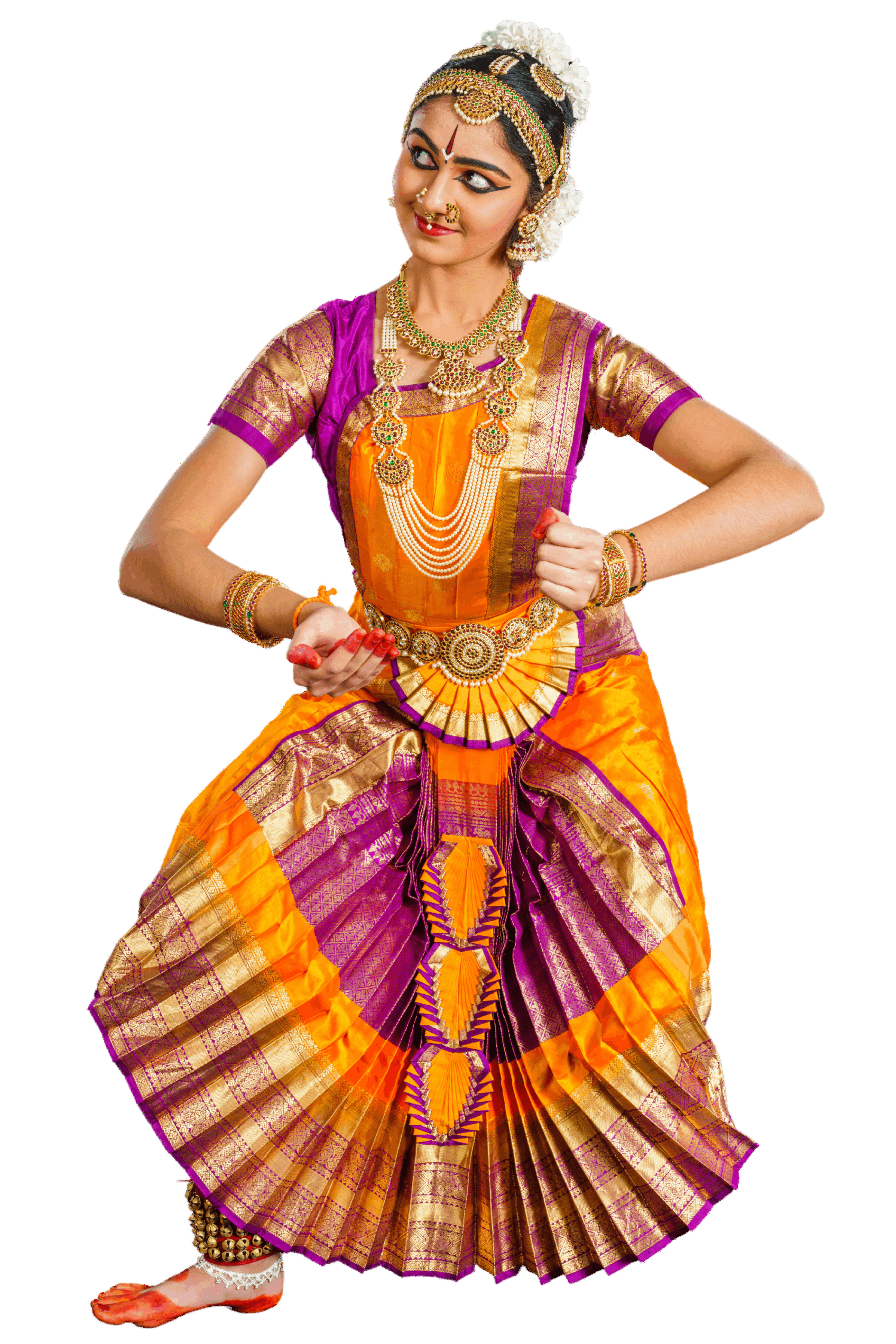
In His form as Narasimha, he protects his ardent child devotee Prahalladh, by killing his demon father King Hiranya. In His form as Lord Krishna, the friendship of Krishna and his poor childhood friend Sudhama portrays how true friendship is beyond rich or poor and is all about love and compassion.
In His form as Vamana, he measures the earth and heavens with his steps, thereby defeating the Asura King Mahabali. Is it even possible to tell you all of His glory? Oh, He who has 10 forms?
Lord, as your devotees ascend the beautiful hills to the temple of Tirupati, you alone instill bliss as they catch a glimpse of your moon-like face, oh, He who resides in Vaikuntha. You and your wife Padmavathi garland each other as part of a wedding procession. As Vishnu, He holds the shankh (conch shell) and chakra (discus), giving blessings with his right hand.
As Venkateswara, He is adorned in flowers; one needs 10 million eyes to take in his beauty! As Krishna, He is the charioteer of Arjuna, guiding him towards his dharma (duty) by imparting the Bhagwat Geeta.
Devar Munivar Varnam

Ragam: Shanmukhapriya
Talam: Adi
Composer: Sri Lalgudi G. Jayaraman
Language: Tamizh
Varnam is the central and most elaborate item in a Bharatanatyam repertoire. It is the longest, most intricate and demanding piece, and it alternates between nritta(pure dance) and abhinaya(expressions). There is a perfect synchronization of various elements of dance, this giving the dancer abundant scope for displaying her rhythmic talents along with rich and variegated abhinaya.
Devar Munivar Varnam in praise of Vishnu. As Lord of the world, He is revered by Gods (Devar) and sages (Munivar) alike. His ten forms or Avatars, called Dasavatharam include Matsya, Kurma, Varaha, Narasimha, Vamana, Parasurama, Rama, Krishna, Kalki. In His form as Narasimha, he protects his ardent child devotee Prahalladh, by killing his demon father King Hiranya. In His form as Lord Krishna, the friendship of Krishna and his poor childhood friend Sudhama portrays how true friendship is beyond rich or poor and is all about love and compassion.
In His form as Vamana, he measures the earth and heavens with his steps, thereby defeating the Asura King Mahabali. Is it even possible to tell you all of His glory? Oh He who has 10 forms?
Lord, as your devotees ascend the beautiful hills to the temple of Tirupati, you alone instill bliss as they catch a glimpse of your moon-like face, oh He who resides in Vaikuntha. You and your wife Padmavathi garland each other as part of a wedding procession. As Vishnu, He holds the shankh (conch shell) and chakra (discus), giving blessings with his right hand.
As Venkateswara, He is adorned in flowers; one needs 10 million eyes to take in his beauty! As Krishna, He is the charioteer of Arjuna, guiding him towards his dharma (duty) by imparting the Bhagwat Geeta.
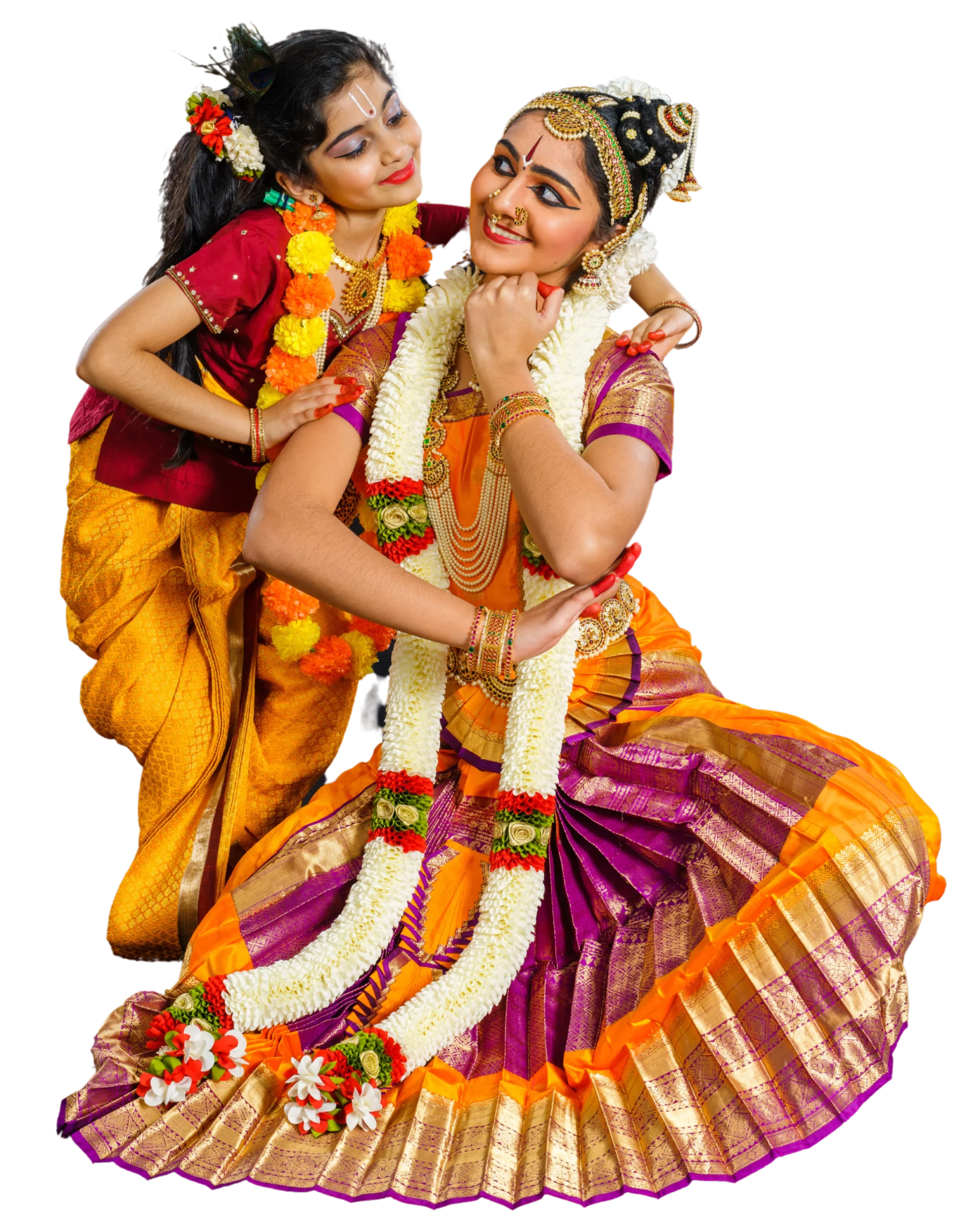
Bhavayami Gopala Balam
Talam: Kanda Chapu
Composer: Sri Annamacharya
Language: Sanskrit
A padham explores a particular theme. They are based solely on expression and story-telling, and focus on conveying an emotional monologue or dialogue.
Here the dancer celebrates Yashoda’s motherly love for little Krishna while highlighting the poet’s words, “I meditate upon the Little Gopala, Who is served by my mind. I always meditate on those feet.” The proud mother meditates upon the Little Gopala, who is glittering forth due to immense rhyming sound coming from jewel and bell studded waist girdle, and who is engrossed in the beautiful new butter-ball in His hand, who killed the evil demon Puthana who tried to kill him, who is situated at the mountain of Tirupati as Venkateshwara, who is the savior of the people of Gokulam by lifting the Govardhan mountain.
Bhavayami Gopala Balam

Talam: Kanda Chapu
Composer: Sri Annamacharya
Language: Sanskrit
A padham explores a particular theme. They are based solely on expression and story-telling, and focus on conveying an emotional monologue or dialogue.
Here the dancer celebrates Yashoda’s motherly love for little Krishna while highlighting the poet’s words, “I meditate upon the Little Gopala, Who is served by my mind. I always meditate on those feet.” The proud mother meditates upon the Little Gopala, who is glittering forth due to immense rhyming sound coming from jewel and bell studded waist girdle, and who is engrossed in the beautiful new butter-ball in His hand, who killed the evil demon Puthana who tried to kill him, who is situated at the mountain of Tirupati as Venkateshwara, who is the savior of the people of Gokulam by lifting the Govardhan mountain.
Shankara Shree Giri
Talam: Adi
Composer: Sri Swathi Thirunal
Language: Hindi
This brisk, quick moving piece is in praise of Lord Shankara(Shiva) – the God of Kailasa dances majestically in the chitra sabha accompanied by the celestial beings with the holy ash smeared on his body and Rudraksha adorned as a garland. The dancer depicts the entire Universe rejoicing at the sight of this celestial dance, symbolizing the five divine acts of creation, sustenance, dissolution, concealment and bestowment of grace.
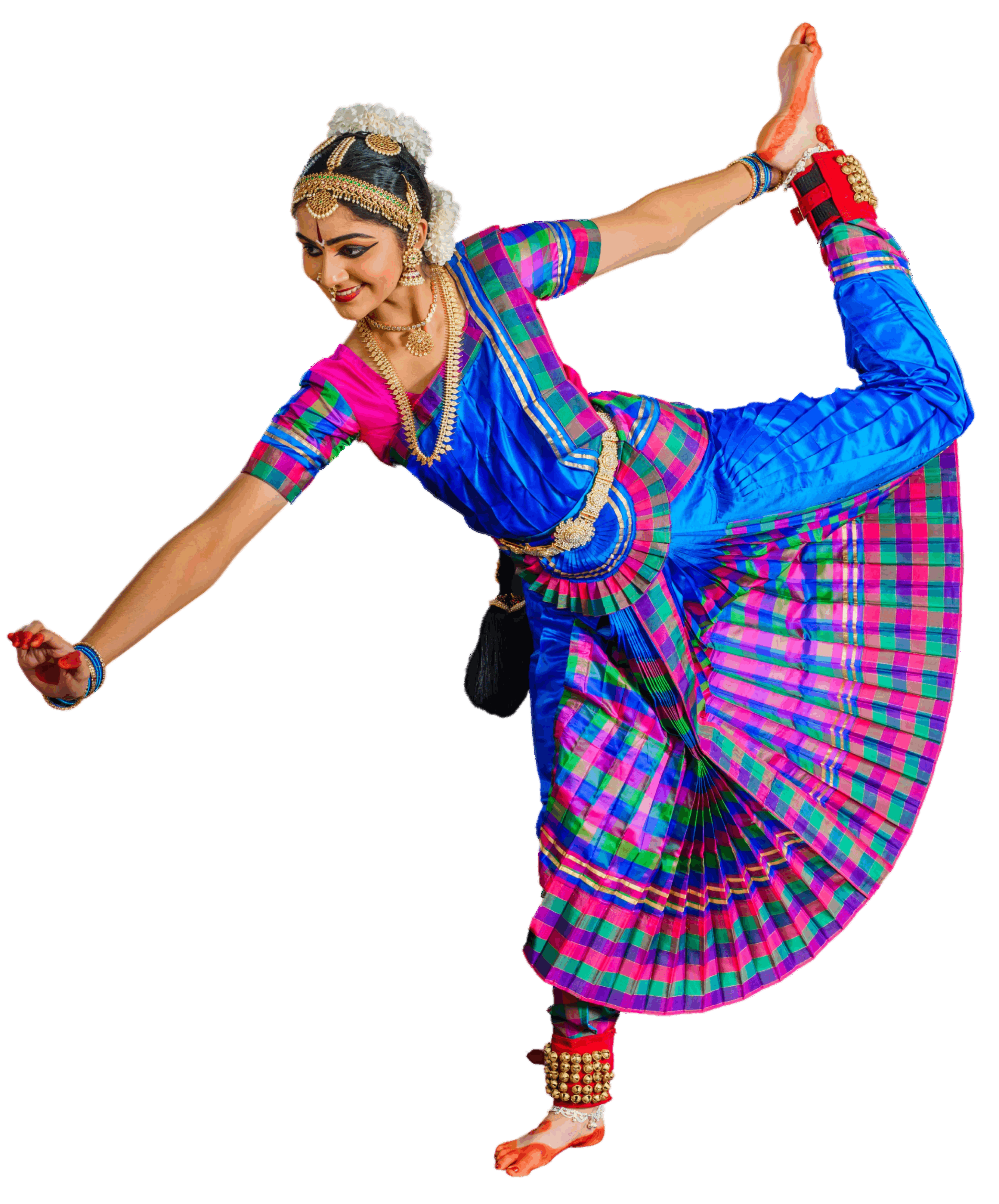
Shankara Shree Giri

Talam: Adi
Composer: Sri Swathi Thirunal
Language: Hindi
This brisk, quick moving piece is in praise of Lord Shankara(Shiva) – the God of Kailasa dances majestically in the chitra sabha accompanied by the celestial beings with the holy ash smeared on his body and Rudraksha adorned as a garland. The dancer depicts the entire Universe rejoicing at the sight of this celestial dance, symbolizing the five divine acts of creation, sustenance, dissolution, concealment and bestowment of grace.
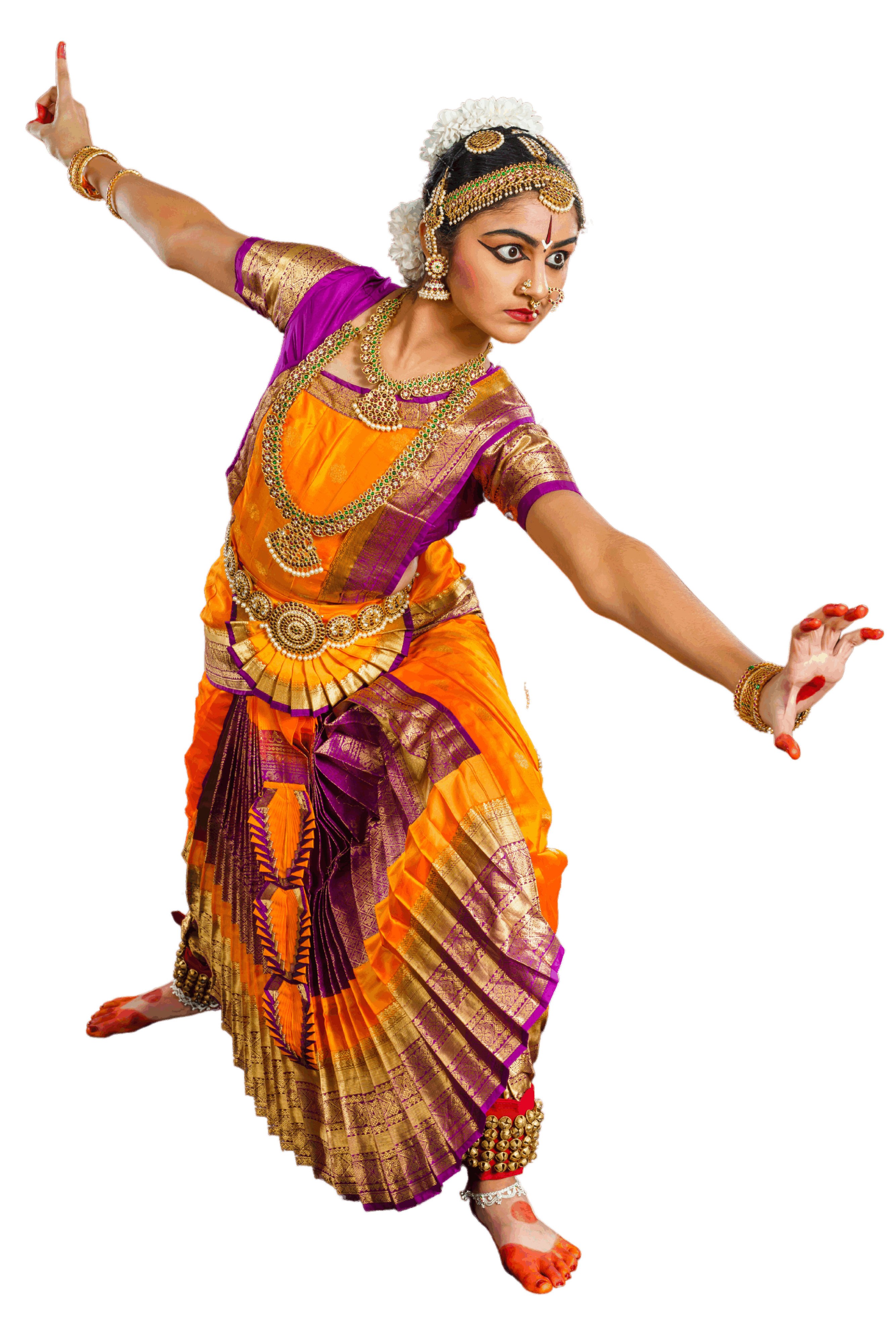
Durge Durge Jaya Jaya
Talam: Adi
Composer: Madurai N. Krishnan
Language: Tamizh
In this fast paced Krithi, the victory of Mother Durga, in her rudra bhava, as destroyer of evil and one who is the ocean of compassion is exalted. Glory to Mother Kaali, who is adorned with a garland of human skulls (represents the destruction of our ego) and who uplifts the whole world.
Durge Durge Jaya Jaya

Talam: Adi
Composer: Madurai N. Krishnan
Language: Tamizh
In this fast paced Krithi, the victory of Mother Durga, in her rudra bhava, as destroyer of evil and one who is the ocean of compassion is exalted. Glory to Mother Kaali, who is adorned with a garland of human skulls (represents the destruction of our ego) and who uplifts the whole world.
Thillana
Talam: Adi
Composer: Lalgudi G. Jayaraman
Language: Sanskrit
Thillana is a lively, rhythmic piece where the dancer weaves beautiful dance patterns to melodious music and intricate footwork. In the lyrics (sahityam) of this thillana, “Sundara Mohana Roopam Vandita Muni Jananandam” refers to Lord Muruga’s beautiful and charming form which is a bliss to the great sages who worship him. “Santatam Valli Kaantam Chintaye Guruvaram Skandam” refers to their thoughts that are filled with the magnificent guru, Skanda(Lord Muruga), the husband of Valli.
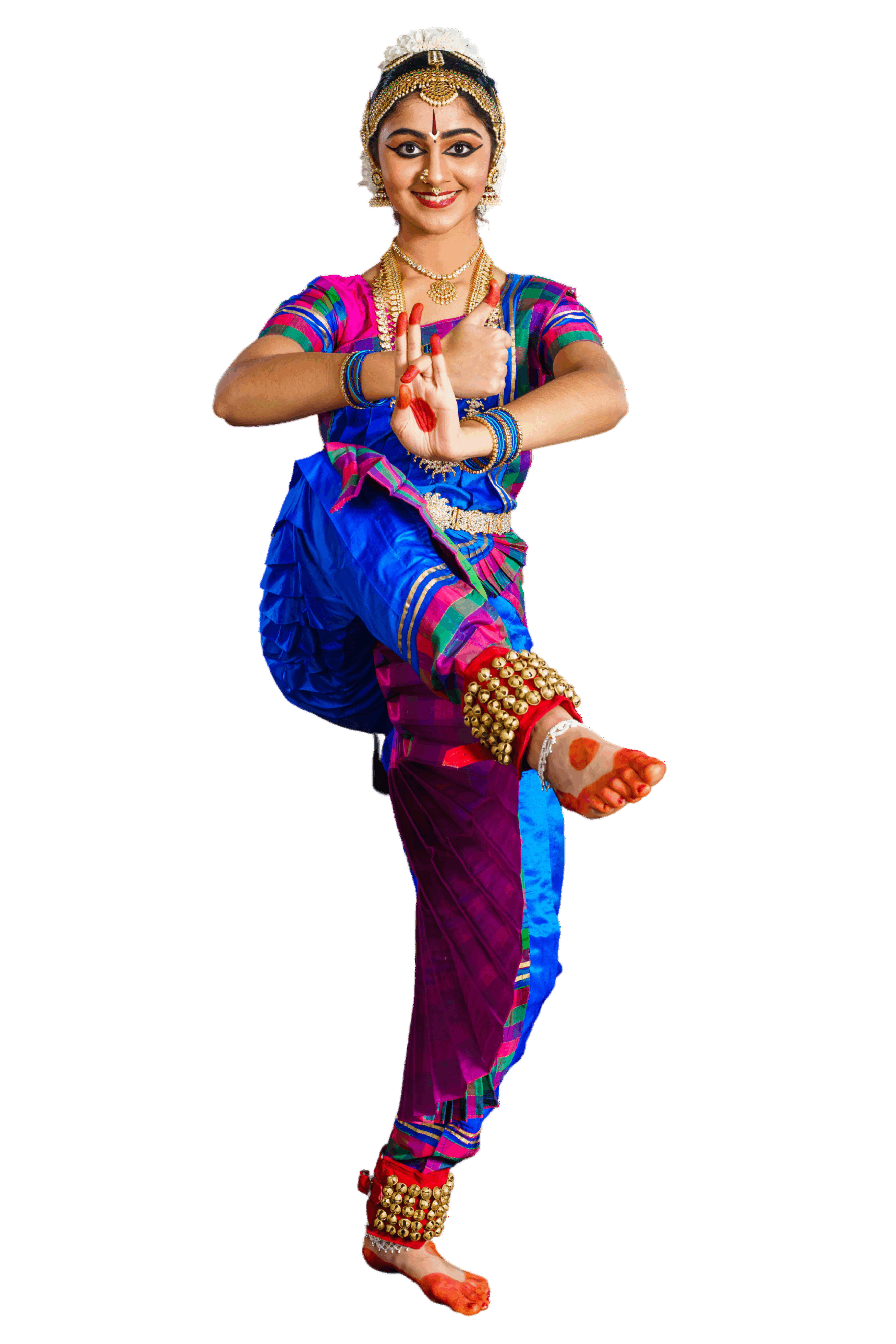
Thillana

Talam: Adi
Composer: Lalgudi G. Jayaraman
Language: Sanskrit
Thillana is a lively, rhythmic piece where the dancer weaves beautiful dance patterns to melodious music and intricate footwork. In the lyrics (sahityam) of this thillana, “Sundara Mohana Roopam Vandita Muni Jananandam” refers to Lord Muruga’s beautiful and charming form which is a bliss to the great sages who worship him. “Santatam Valli Kaantam
Chintaye Guruvaram Skandam” refers to their thoughts that are filled with the magnificent guru, Skanda(Lord Muruga), the husband of Valli.
Mangalam
Mangalam marks the closing of a margam. The dancer thanks God, her guru, Mother Earth, and the audience for their support throughout her performance.
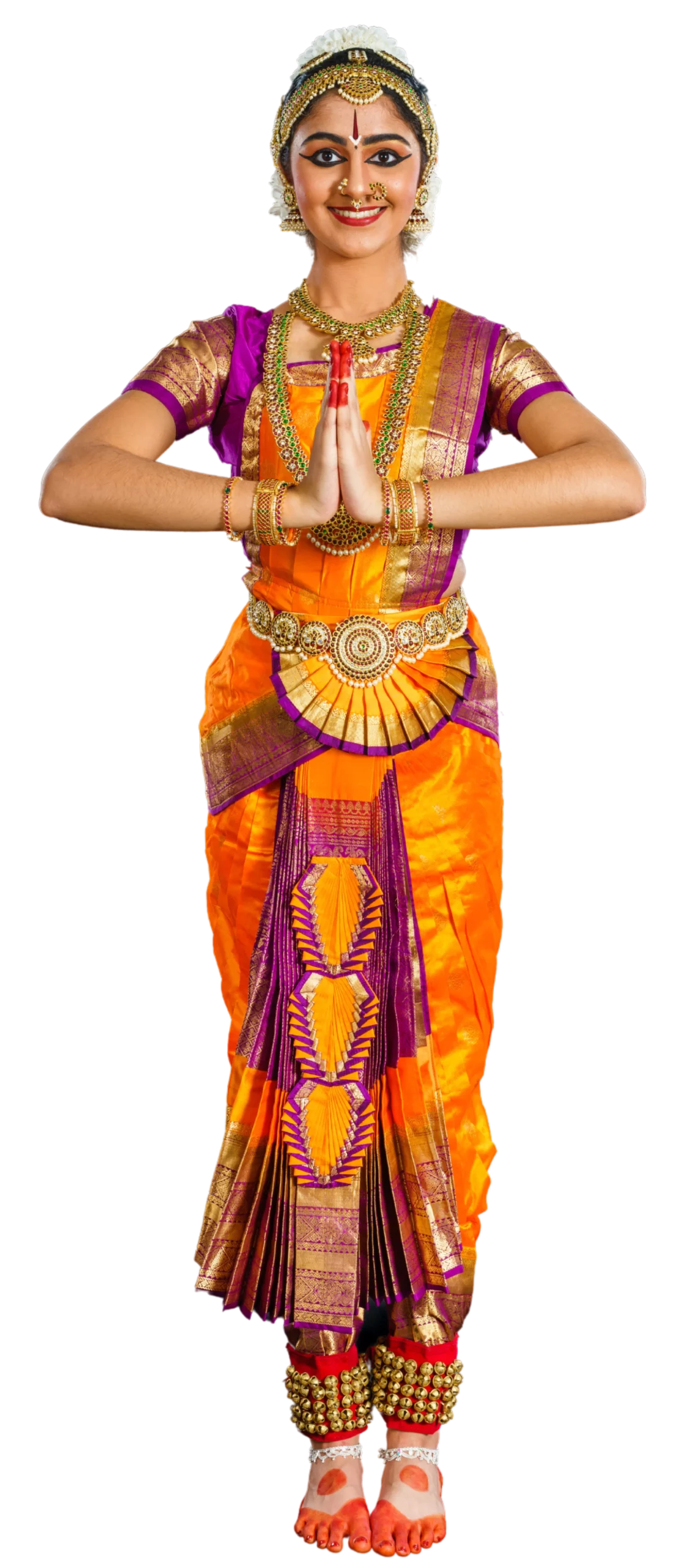
Mangalam

Mangalam marks the closing of a margam. The dancer thanks God, her guru, Mother Earth, and the audience for their support throughout her performance.
